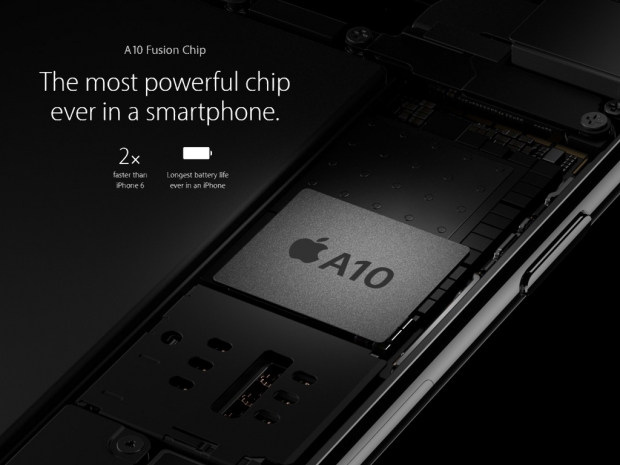The A10 Fusion SoC is a quad-core chip with 3.3 billion transistors. Unfortunately, Apple was not keen to reveal any more details but it is probably based on the same TSMC 16nm FinFET manufacturing process, just like the Apple A9X SoC as we are sure that it does not want to mix Samsung's 14nm and TSMC's 16nm on the same chip, as it did with the A9 on the iPhone 6S and iPhone 6S Plus.
The A10 Fusion features a quad-core CPU part, with two high-efficiency cores that should handle all the basic tasks and use one-fifth the power, and two high-performance cores that will offer 40 percent faster processing compared to the A9 and twice as fast processing compared to the A8 SoC. The SoC has a special in-house developed performance controller that handles switching between high-efficiency and high-performance cores.
According to Apple, this will significantly increase the battery life, around 20 to 30 percent compared to the iPhone 6s.
The graphics part of the chip also got a significant boost, offering 50 percent more performance compared to the A9 and up to three times faster than the A8 SoC. The GPU is also more power efficient and uses 2/3 the power of A9 GPU.
The iPhone 7 and iPhone 7 Plus also feature LTE-A with 450Mbps, which suggests that there is probably an Intel modem inside, but we will have to wait for some teardowns to be sure.
Fine details like the amount of RAM, GPU details and the actual clock of the CPU and GPU part in the A10 SoC, will probably come at a later date.





